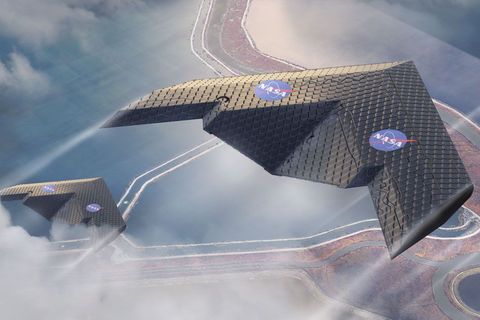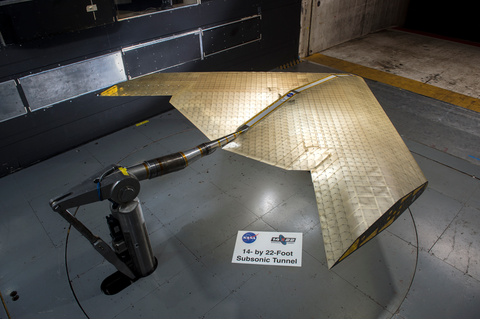NASA and MIT's Transforming Wing Could Change How Planes Are Built
Composed of hundreds of small, identical pieces, the shape-shifting wing can automatically morph to the most efficient shape for a given stage of flight.
By Eric Limer ELI GERSHENFELD, NASA AMES RESEARCH CENTER
ELI GERSHENFELD, NASA AMES RESEARCH CENTERNASA is no stranger to transforming aircraft. Consider the ten-engine drone called Greased Lightning, which can shift from VTOL into cruise mode in midflight.
A new project from NASA and MIT explores shape-shifting aircraft further, but from a distinctly different direction. This new wing technology, made up of hundreds of identical pieces, is the foundation for aircraft with flexible wings that transform dynamically in flight to create the optimal shape for their moment-to-moment flight conditions.
Outlined in the journal Smart Materials and Structures, and by MIT News, the approach involves building one wing surface out of a series of injection-molded structures made of polyethylene resin, which are coated with a layer of polymer material. This creates a lightweight and flexible structure that could be morphed and changed in flight. By tweaking the flexibility of specific structures in specific locations, researchers could dial in the wing's response to airflow conditions so it automatically would transform into an ideal aerodynamic shape for the various stages of flight, such as takeoff and cruising.

KENNY CHEUNG, NASA AMES RESEARCH CENTER
As research engineer Nicholas Cramer at NASA Ames, the paper's lead author, explains in MIT News: "We’re able to gain efficiency by matching the shape to the loads at different angles of attack. We’re able to produce the exact same behavior you would do actively, but we did it passively.”
Researchers tested a hand-constructed model in NASA's Langley Research Center wind tunnel. Eventually, they hope, robots could take on the construction dirty work. And given that the design is modular and the structural subunits are cheap to produce, the approach could also make it much easier to prototype unusual but perhaps more aerodynamically efficient wing designs.
In the meantime, flexible materials are coming to more traditional wing designs as well, with so-called "flexfoil" wings that replace formerly rigid flaps and ailerons with a jointless structure that can help improve reliability and lifespan by distributing the stress across the entire component equally.
Whatever the future of flight looks like, you can bet it will be significantly more flexible than what we have today.
Source: MIT News
No comments:
Post a Comment